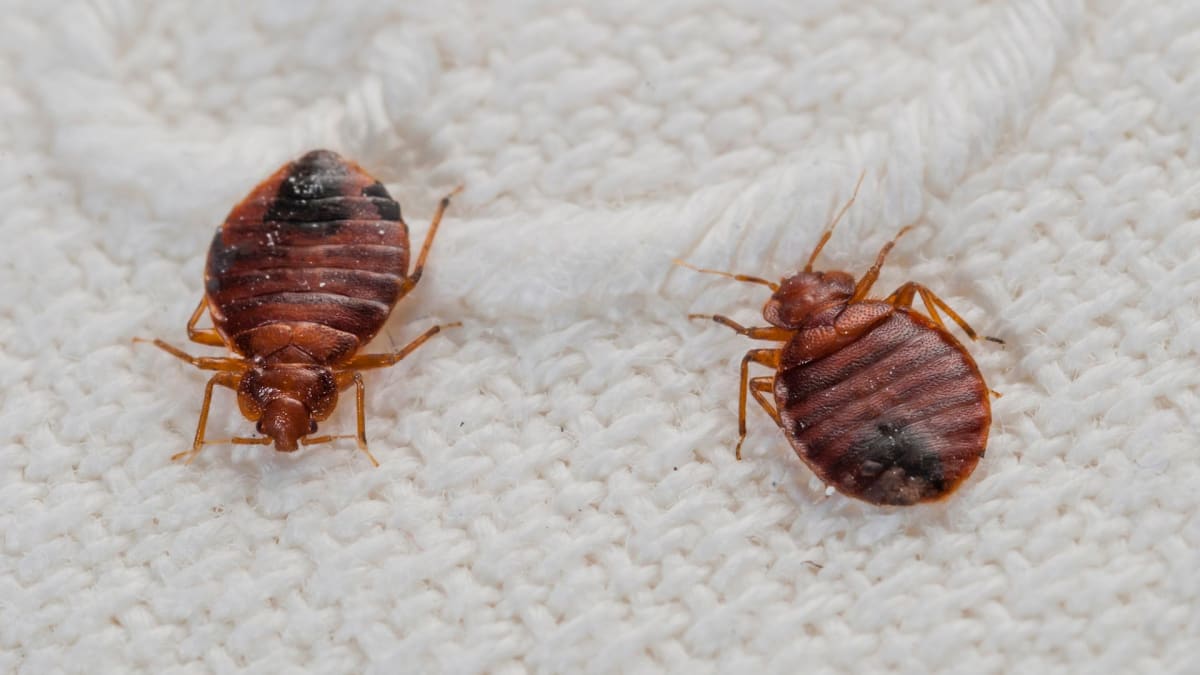Reliable Bed Bug Exterminator: DC Solutions with Heat Treatment
Wiki Article
Checking Out the Science Behind Bed Insect Heat Treatments as a Sustainable Insect Monitoring Technique
In the world of insect monitoring, the mission for lasting and efficient services remains a continuous quest. One such approach that has actually gained traction in the last few years is using heat therapies to fight bed pest infestations. By taking advantage of the scientific research behind thermal death factors for these relentless parasites, heat treatments supply a promising option to typical chemical-based approaches. The intricacies of exactly how warm properly eliminates bed bugs and the wider effects for lasting insect management practices make this a topic worth checking out better.Bed Pest Heat Treatment Process

Thermal Fatality Factor for Bed Bugs
Subjecting bed bugs to elevated temperature levels past their thermal resistance array is essential for achieving efficient obliteration in warmth therapy procedures. By getting to and keeping temperature levels over the thermal death factor for bed insects, insect management professionals can guarantee detailed removal of bed pest populaces, consisting of hard-to-reach areas where chemical treatments may be less reliable. Understanding the thermal fatality factor for bed insects is necessary for carrying out successful heat treatment methods and accomplishing sustainable pest management end results.Benefits of Heat Treatments
Having developed the crucial thermal death factor for bed insects, it is critical to currently explore the substantial advantages that warmth therapies provide in effectively eradicating these resistant insects. When contrasted to standard chemical methods, warmth therapies existing numerous key advantages. Among the primary benefits is that heat can permeate deep into splits and gaps where bed insects conceal, making sure that also the most hard-to-reach areas are heated up to lethal temperature levels. This detailed approach not only eliminates online pests yet likewise targets bed pest eggs, protecting against future infestations.Additionally, warmth treatments are non-toxic right here and ecologically pleasant, making them a sustainable insect administration technique. Unlike chemical pesticides, warmth therapies do not leave dangerous deposits that can present risks to human health and wellness or the setting. This facet is specifically important in sensitive environments such as healthcare facilities, colleges, and houses where chemical usage might not be preferable.
In addition, warm therapies have a high success rate in removing bed pest problems in a solitary therapy, minimizing the requirement for several brows through and decreasing disruption to residents. This efficiency not only conserves money and time yet additionally supplies assurance to those dealing with bed insect issues.
Efficiency of Heat Therapy

Research researches have consistently demonstrated the efficiency of heat therapies in achieving a high price of bed bug death. Properly conducted warmth treatments can get to all the cracks and gaps where bed pests may be nurturing, making sure an extensive strategy to extermination. In addition, heat therapies have actually the added advantage of eliminating bed bug eggs, which are usually resistant to typical chemical treatments. Generally, the performance of heat therapies in eradicating bed insect problems makes them a dependable and lasting insect administration approach.
Sustainable Insect Administration Perks
Executing sustainable insect management practices offers lasting advantages for both the atmosphere and public health. By making use of methods such as warmth therapies for insect control, we can reduce the dependence on unsafe chemical pesticides that can have have a peek at this site negative impacts on communities and human health - DC exterminator. Lasting bug administration strategies aid in protecting biodiversity by targeting specific parasites without harming non-target microorganisms, thereby keeping a balanced ecosystem
Furthermore, lasting pest administration practices add to the overall health and well-being of the public. By reducing direct exposure to poisonous chemicals made use of in typical pest control approaches, warmth treatments give a much safer choice for insect administration in residential, industrial, and public spaces. This reduction in chemical use also helps in protecting against pesticide residues from infecting dirt, water, and air, safeguarding ecological top quality.
Conclusion
Finally, bed pest heat treatments have been revealed to be a effective and sustainable pest administration method. The thermal fatality factor for bed bugs makes them at risk to warmth treatments, which have various advantages over typical chemical therapies. The effectiveness of heat treatments in getting rid of bed bug problems while minimizing ecological impact highlights the potential of this technique as a sustainable option for bug control.The bed pest heat treatment process involves raising the temperature within infested areas to a level that successfully gets rid of bed bugs and their eggs. By reaching and maintaining temperature levels over the thermal fatality factor for bed pests, bug monitoring specialists can make certain comprehensive elimination of bed pest populations, including hard-to-reach locations where chemical therapies might be less effective. One of the key advantages is that heat can penetrate deep right into splits and gaps where bed bugs conceal, making certain that even the most hard-to-reach areas are heated to lethal temperature levels. Unlike chemical therapies that might leave behind resistant populations, warmth therapies supply a ecologically friendly and non-toxic remedy that can pass through deep into furniture, wall surfaces, and various other hard-to-reach locations where bed pests hide.
The thermal death factor for bed insects makes them vulnerable to heat treatments, which have numerous benefits over conventional chemical treatments.
Report this wiki page